And the answer is… community supported agriculture
November 30, 2005
image courtesy of the Real Dirt on Farmer John website
Well, at least that is one of the most positive answers to the questions that came to my mind after watching Erwin Wagenhofer’s We Feed the World (Austria 2005) Saturday night at the IDFA. Although reviews and film descriptions already abound, here’s culiblog’s quick take on the films The Real Dirt on Farmer John, We Feed the World and Bullshit.
Context is everything, although this hadn’t occurred to me weeks ago when I reserved my tickets for the IDFA and Shadow Festivals. It was pure coincidence that I chose Taggert Siegel’s The Real Dirt on Farmer John (US 2005) instead of We Feed the World as my first IDFA film. But the documentary about John Peterson (I heart him) is such a poignant portrayal of his pursuit of agricultural viability on a very personal level, that the film armed me with an outlook positive enough to take on the eloquent doom and gloom of the other documentaries. I wish my fellow audience members had been so lucky, because their anger and disillusionment about the realities sketched in Wagenhofer’s, We Feed the World and even Holmquist’s Bullshit was palpable.
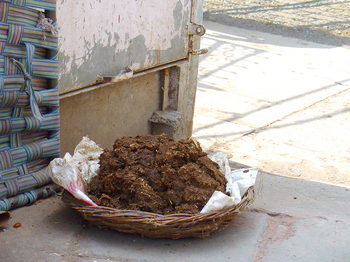
We Feed the World brilliantly articulates the disastrous impact that our European (read North American) agricultural practices have upon the rest of the world’s farmers, their communities and cultures. We Feed the World lays bare a food system of which we are part and parcel here in Fort Europe by interviewing Austrians high up in the ‘food chain’ of the agricultral industry. The film is larded with head shots of Jean Ziegler, UN Special Rapporteur on the Right to Food, who states in no uncertain terms that multinationals more wealthy than most Western countries (like Nestlé, or in the case of Holmquist’s Bullshit, Monsanto), are driven by the desire for continual growth and profit. These companies’ narrow economic interests do not mesh with something as important as feeding humans let alone preserving complex social and cultural ‘economies’. Unfortunately, the film does not present any alternatives to the predicatment it sketches. WFTW would be more effective shown together with a film like the Real Dirt on Farmer John that deals with a complete picture of the the agricultural lifestyle and farming as cultural heritage.
PeÃ¥ Holmquist’s Bullshit focusses on Vandana Shiva, a woman tirelessly taking on GMO producing multinationals for bio-piracy in order to revoke their seed and plant patents. Brava Shiva! She has successfully removed patents on the neem tree, the branches and leaves of which are effectively used in India for dental and digestive health, a variety of basmati rice, and a variety of draught resistant wheat. On a northern Indian farm she and her teams have created an enormous seed bank of highly nutritious and drought-resistant crops. Her arch nemesis Barun Mitra gave Shiva the Bullshit Award for Sustaining Poverty because she eschews the Monsanto definition of techonological advances in agriculture. Ever since, Shiva has appropriated the useful cow-pies as a positive symbol for the rural cause. She describes how the women gathering and drying these fuel cells form them into unique patterns which Shiva refers to as ’shit design’.
In a heated argument about small farms in India, Barun Mitra states his position quite clearly, ‘Agriculture is not economically viable!’ Not viable for whom and in which economy, is the question that comes to my mind. Indeed agriculture defined by the likes of Monsanto and Novartis is not viable for small farmers taking out loans to buy seeds for hybrid crops, plants that will among other things, not yield fertile seeds for use the following season. Agriculture as defined by Shiva and Farmer John, who create seed banks and who provide a platform for community supported agriculture seems rather viable. Shiva is adamant that bio-diversity belongs to the commons and we are cheered when her visit to the Tibetan government-in-exile results in their well supported policy that Tibetans will only grow crops using organic methods.
image courtesy of the Real Dirt on Farmer John website
Maybe the best answers can only come from a film like the Real Dirt… that explores a man’s personal relationship with his family farm, his identity as a third generation farmer, albeit the only one to dress up like a bee and wear a flourescent feather boas whilst farming. The documentary provides us answers that can only be found in a transforming and transformative role for a contemporary farmer and that the economic realities of sustainable agriculture should be also personally sustainable for the farmers involved.
image courtesy of the Real Dirt on Farmer John website
Community supported agriculture Farmer John style
PeÃ¥ Holmquist’s Bullshit Website
Community supported agriculture, an incomplete list:
University of Massachusetts CSA Resources
Biodynamics CSA site
World Hunger Year site on CSA
Food for the Cities Programme
Free Soil Organisation
culiblog’s favourite farmer’s market in Amsterdam (in Dutch)
Not very sexy Dutch community supported agriculture
Fallen Fruit Organisation
We Feed the World Website
debra at 11:17 | | post to del.icio.us


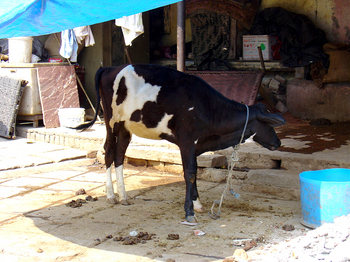
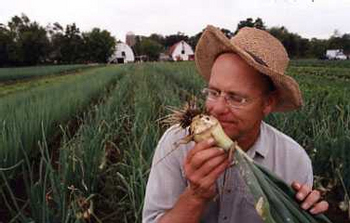

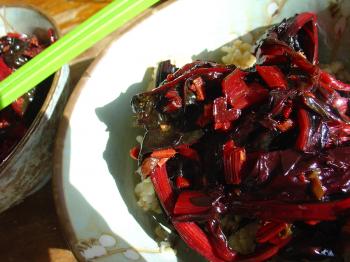
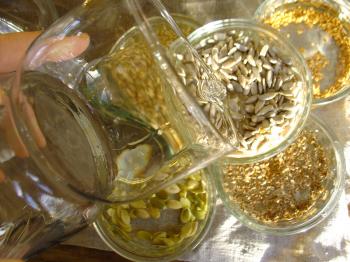








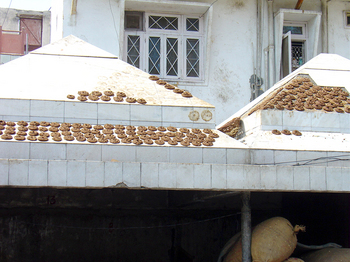
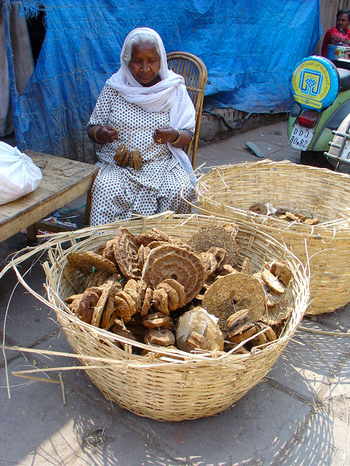
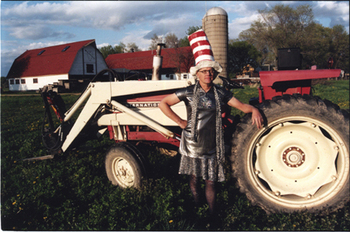
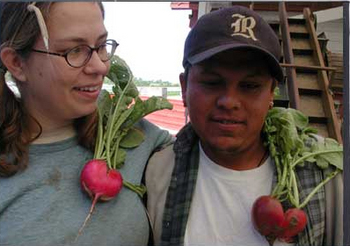



Wish I had something relevant to say about Saturday’s IDFA action…I just couldn’t contain my excitement over finding another person writing about food in Amsterdam. Yay! Will be reading and commenting more when time permits…
Comment by Mark — December 9, 2005 @ 7:11
Respected sir can you please what are all the varieties registered as a farmers’ variety in india
Comment by ameer — March 17, 2011 @ 7:36